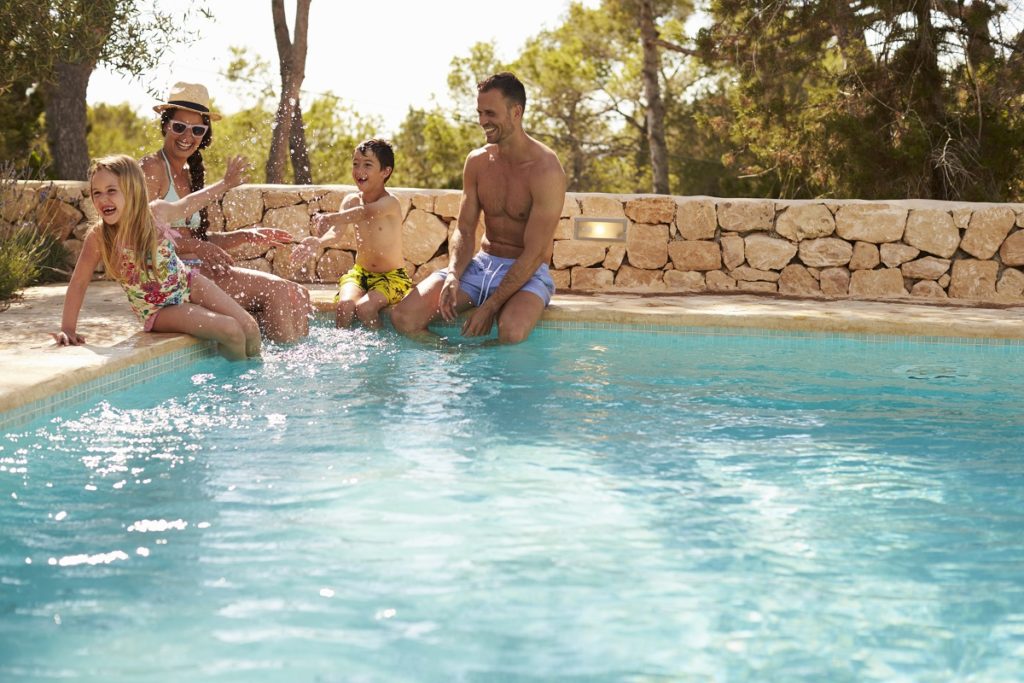Few things feel as lovely as jumping into a pool to cool off after strenuous activity or during the summer heat. However, a dirty pool could put a damper on your fun. Naturally, stains will occur in swimming pools, and you need regular maintenance to keep them clean. Some stains will be easy to remove, while others will need the help of a professional. Before you can call in someone, you need to know how to check your pool’s cause for discoloration.
When you call your regular swimming pool repair team, they will only look to confirm or refute your suspicions before taking the necessary action. Two things will be indicative of staining. First, you may notice a change in the color of your pool or a part of it. Color combinations will include red-blue, green-brown-red, green-brown and pinkish-red, each pointing to either an organic or metal-based stain. The next thing you might notice is a change in the feel of the floor of the pool. Algae, worms, leave, and dead animals will likely decay under the pool and cause it to become slippery. The following are common stain types:
Calcium stains
Calcium staining is complex. White calcium, also called scale, forms when there has been an inconsistency in the pH of the pool, and will likely show up in new pools. Calcium spots may result from high pH or poor application of the pool interior which leaves voids and bubbles of air in the finish. The voids fill up with water, and it calcifies and expands over time to other parts of the pool.
Concrete pools also develop calcium scale where cement turns white. Such cement is 36% calcium hydroxide. The layer will only keep growing once it starts and will likely get harder if not removed. Untreated calcium will probably crack, lift or break the pool surface, causing costly damage.
Rust Stains
90% of rust in swimming pools will be caused by metallic objects like nails, toys, and hairpins. When they get into the saltwater, they rust within days. Fragments of rust may also settle in the pool during metal cutting, grinding and other activities in the installation. They may become noticeable only after spreading, first manifesting as small spots of rust. Rust stains can be treated with acid washing.
Copper stains
Many homes use heating and cooling systems, but some also use a separate water heating system for the pool. The systems sometimes use copper pipes, and the subsequent heat causes copper to accumulate and create stains in your pool. Copper stains show up as a persistent blue, brown or green color in the floor and the walls. They are easy to miss because they resemble algae. Most people increase chlorine doses trying to deal with the stain, but that only oxidizes the stains to make them darker. Without chlorination, copper stains also darken due to dirt and minerals to give the floor of the pool a different appearance.
Black spot algae

Algae lives in the pumps, filters, and pipework and will often be re-introduced into the pool even after acid washing. It shows up as black spots that begin spreading on the floor and walls of the pool. It is crucial to treat algae as soon as you notice it.
Removing stains will often require trained expertise. For instance, using algaecides may clear the pool water and remove spotting but will need control so as not to harm swimmers. Acid washing to remove calcium stains will also need control so as not to damage pumps and pipework. As a rule of thumb, have your pool inspected for stains once every three months.




